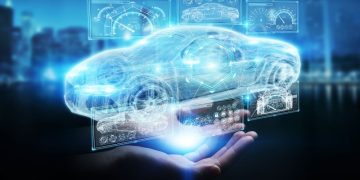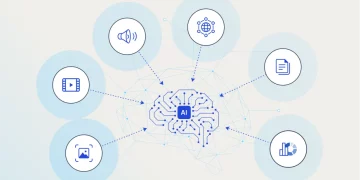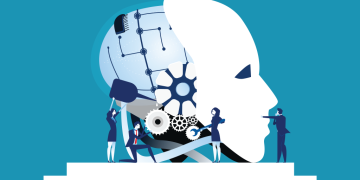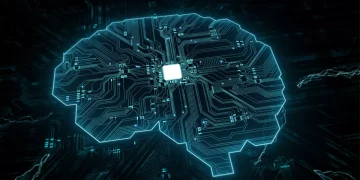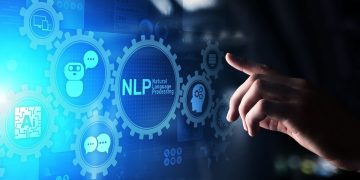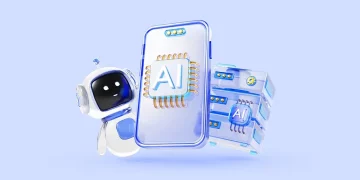Introduction: From Language Generation to Language Understanding
In recent years, natural language processing (NLP) has undergone a dramatic transformation. AI systems can now write essays, summarize documents, translate languages, and even hold fluid conversations. Yet, a central challenge remains: Do these models truly understand human language—or are they just pattern-matching at scale?
In 2025, a new generation of NLP models is emerging—not only more powerful in scale but fundamentally different in architectural design, reasoning capability, and linguistic depth. These systems are starting to move beyond surface-level fluency to grasp the semantics, pragmatics, context, and ambiguity that characterize real human communication.
This article explores the most promising breakthroughs that are bringing us closer to AI that understands language—not just mimics it.
1. Semantic Understanding at Scale: Beyond Next-Token Prediction
Traditional large language models (LLMs) like GPT-3 and GPT-4 rely on predicting the next word based on statistical patterns. While effective for generation, this approach often lacks true semantic depth.
Recent advances have changed this:
- Semantic-aware models such as Gemini 1.5 and Claude 3.5 incorporate multi-turn memory and contextual awareness to sustain meaning over longer conversations.
- Contrastive language learning (like OpenAI’s Whisper + GPT-4o fusion) aligns textual representations with real-world audio and visual inputs, grounding meaning in perception.
- Language-Vision-Action models embed linguistic concepts into multimodal world models, helping AI connect words with real consequences.
These systems are trained to reason across meaning, not just generate fluent output.
Why it matters: Deep semantic understanding is key to safe, truthful, and useful AI—especially in education, law, healthcare, and policy-making.
2. Context Expansion: Mastering Long-Term Memory and Discourse
Language doesn’t happen in isolation. Meaning unfolds across paragraphs, conversations, and contexts. A major limitation of past LLMs was their context window—usually a few thousand tokens.
Breakthroughs in 2025 have radically expanded this:
- Models like Claude 3.5 Sonnet and GPT-4o now support context windows exceeding 1 million tokens, enabling full-document comprehension, legal reasoning, and multi-hour transcripts.
- Segment-aware attention mechanisms (used in models like Longformer and Mamba) maintain relevance across time without bloating compute.
- Retrieval-augmented generation (RAG) dynamically brings in external knowledge while preserving conversational flow.
Together, these advances allow AI to sustain narratives, track topics, and resolve long-range dependencies in natural conversation.
3. Pragmatics and Implicature: Reading Between the Lines
Understanding language means grasping not just what is said, but what is meant—a field known as pragmatics. This includes sarcasm, indirect speech, politeness, and cultural nuance.
In 2025, new models are being trained to handle such subtleties:
- Alignment tuning with human feedback helps models learn the intent behind questions (e.g., distinguishing a factual question from a rhetorical one).
- Pragmatic calibration datasets include dialogues with emotion, irony, and figurative language to improve nuance detection.
- Multilingual pretraining introduces models to linguistic structures that vary in politeness, indirectness, or honorific usage.
These techniques allow NLP systems to understand tone, emotion, and social norms, not just literal syntax.
Why it matters: In fields like diplomacy, counseling, negotiation, and customer service, language nuance is everything.
4. Grounded Language Models: Connecting Words to the World
For true understanding, language must be grounded—linked to actions, objects, events, and perception. Recent progress in embodied AI and multimodal models has brought this vision closer to reality.
Examples:
- GPT-4o and Gemini incorporate vision, voice, and gesture input, interpreting meaning from tone, facial expressions, and scenes.
- Embodied agents, like DeepMind’s RT-2-X, use natural language to navigate real or simulated environments.
- Multimodal instruction tuning allows agents to follow commands like “put the red cup next to the tall glass” with contextual grounding.
These systems don’t just process words—they see, hear, and act on them.
Why it matters: Grounded understanding enables interactive, responsive AI—crucial for robotics, AR/VR, assistive tech, and spatial computing.
5. Symbolic and Logical Reasoning Integration
Even the best LLMs often falter on tasks requiring logical deduction, structured argumentation, or symbolic reasoning. That’s where neurosymbolic models come in.
Recent breakthroughs:
- Hybrid models combine neural embeddings with rule-based reasoning engines (e.g., AlphaGeometry or NeuroLogic Decoders).
- Formal logic pretraining enables models to understand and apply logical operators like AND, OR, NOT, and IF-THEN reliably.
- Chain-of-thought prompting is being reinforced with tree-of-thought and graph-based reasoning, helping models explore multiple reasoning paths.
These models can solve math problems, follow rules, or analyze legal arguments in ways older LLMs could not.

6. Emotionally Intelligent NLP: Modeling Empathy and Affect
A new branch of NLP focuses on affective computing—helping AI detect and appropriately respond to emotions in human language.
Technologies include:
- Emotion classifiers trained on conversations, reviews, therapy transcripts, and social media.
- Emotion-to-response models, which adjust tone and content based on detected mood.
- Personality-aware agents, which maintain user-specific empathy profiles across interactions.
Some models are now capable of mirroring user sentiment, offering comfort, or de-escalating tension in support settings.
Why it matters: Emotion-aware NLP is crucial for mental health bots, education tutors, and personal AI assistants that aim to build trust.
7. Multilingual and Cross-Cultural Language Mastery
Global AI understanding requires models that can handle nuance across languages and cultures, not just translate text.
Key breakthroughs:
- Massively multilingual pretraining (over 200+ languages in models like NLLB and xLLaMA).
- Language transfer learning, allowing models to understand under-resourced languages by learning from related high-resource ones.
- Cultural context integration, where idioms, social norms, and rhetorical patterns are included in training data.
Some systems can now adapt their tone and phrasing to match regional norms—critical for diplomacy, marketing, and education.
8. Personalized Language Understanding: Adapting to Individual Users
New NLP models are increasingly personalized—capable of adapting to individual users’ vocabulary, preferences, tone, and communication styles.
Examples:
- Memory-augmented LLMs (e.g., ChatGPT Memory) remember user facts, style, and goals.
- On-device language modeling allows for privacy-preserving customization based on local usage.
- User embeddings and long-term dialogue histories help models evolve with the user.
Personalized NLP creates more natural, consistent, and useful conversations—and opens doors for long-term AI companionship.
Conclusion: Toward True Language Understanding
The breakthroughs in NLP we’re seeing in 2025 mark a transition from language simulation to language comprehension. Models are learning not just how to say things—but what those things mean, why they’re said, and how they fit into broader human experience.
Whether it’s grounding, pragmatics, long-term context, or emotional intelligence, the frontier of NLP is now defined by one overarching goal: deep, nuanced, trustworthy understanding.
The next generation of NLP won’t just speak our language—it will understand our world.





